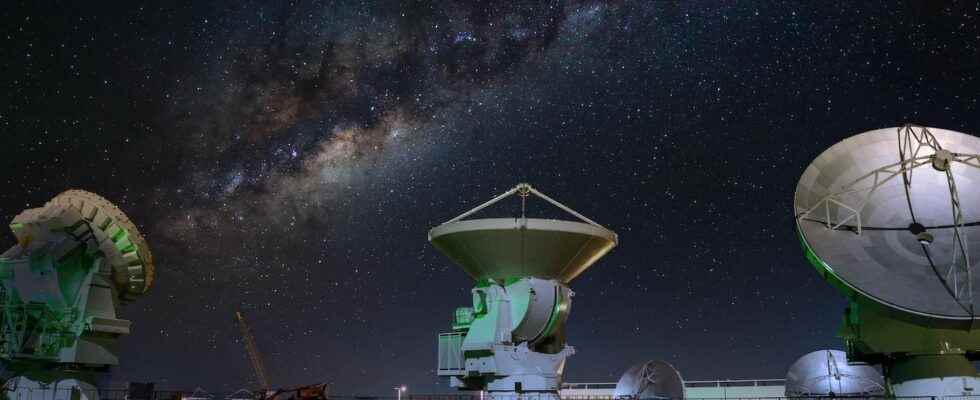Half of the stars that look like our Sun are what astronomers call double stars. In reality, systems formed by two stars orbiting one around the other. A configuration which is not without consequence on the composition of the planets which surround them. Including planets that could host extraterrestrial life.
There are so manystars in our Universe. So many planets too. Looking for traces of extraterrestrial life there is a bit like looking for a needle in a haystack. Except, perhaps, to focus primarily on planets similar to the only planet we know to have allowed life to develop: our Earth. This is why the astronomers search the sky in search ofstars close to the Sun. At least its characteristics. However, half of them are double stars. Does this have an impact on the chances of seeing life develop there?
Possible, tell us today researchers at the University of Copenhagen (Denmark). They have just shown that the planetary systems are formed in a very different way around the double stars. A process that could increase the chances of seeing habitable planets develop there.
As a starting point for this work, there are observations carried out thanks to the Large array of millimeter/submillimeter antennas of the Atacama (Alma, Chile). They show a snapshot of a young double star – it is only about 10,000 years old – surrounded by a disc of gas and dust. The system NGC 1333-IRAS2A is located about 1,000 light years of our Earth. It is made up of two stars separated from each other by about 200 astronomical units. Understand, about 200 times the Earth-Sun distance or more than six times the Sun-Neptune distance.
A larger living area
From these observations, astronomers launched computer simulations which show that the evolution of the disc of gas and dust – the very one which is destined to give rise to exoplanets – is not linear. About every 1,000 years and for ten to a hundred years, it is shaken by movements strong. In parallel, the double star becomes very bright. Ten to a hundred times more than normal. Probably an effect of gravity exerted on each other by the two stars that make up the system. And which, at times, drops huge amounts of matter towards its main star, resulting in heating and therefore an increase in the brightness of the star in question.
Those jerks, say the researchers, could influence the structure of the forming planetary system. influence on the chemical composition of the material from which the planets will form. Because these heating phases will trigger the evaporation of dust grains and ice that may surround them. An influence, therefore, on the extent of that which researchers of extraterrestrials know under the name of living area. A region in which water in the state liquid may exist, in particular.
To better understand whether the process can give the ingredients of life a chance to meet in such double star systems, astronomers will need more observational data. They will also need to know if comets with a high ice content could bring, on planets ready for it, the basic bricks of life. To respond to this, researchers are still expecting a lot from Alma, but also from the new instruments that will soon be available to them: the James Webb Space Telescope (JWST), theEuropean Large Telescope (ELT) or the Square Kilometer Array (SKA). Astronomers will then have a combination of information sources that should yield interesting results.
Do you want to access Futura without being interrupted by advertising?
Discover our online subscriptions and browse without ads! At this moment, the Mag Futura is offered for a 3-month subscription to the subscription “I participate in the life of Futura”!
What is Mag Futura?
- Our first paper journal of more than 200 pages to make science accessible to as many people as possible
- A dive into the heart of 4 scientific themes that will mark 2022, from the Earth to the Moon
*Mag Futura is sent after the third month of registration.
Interested in what you just read?

